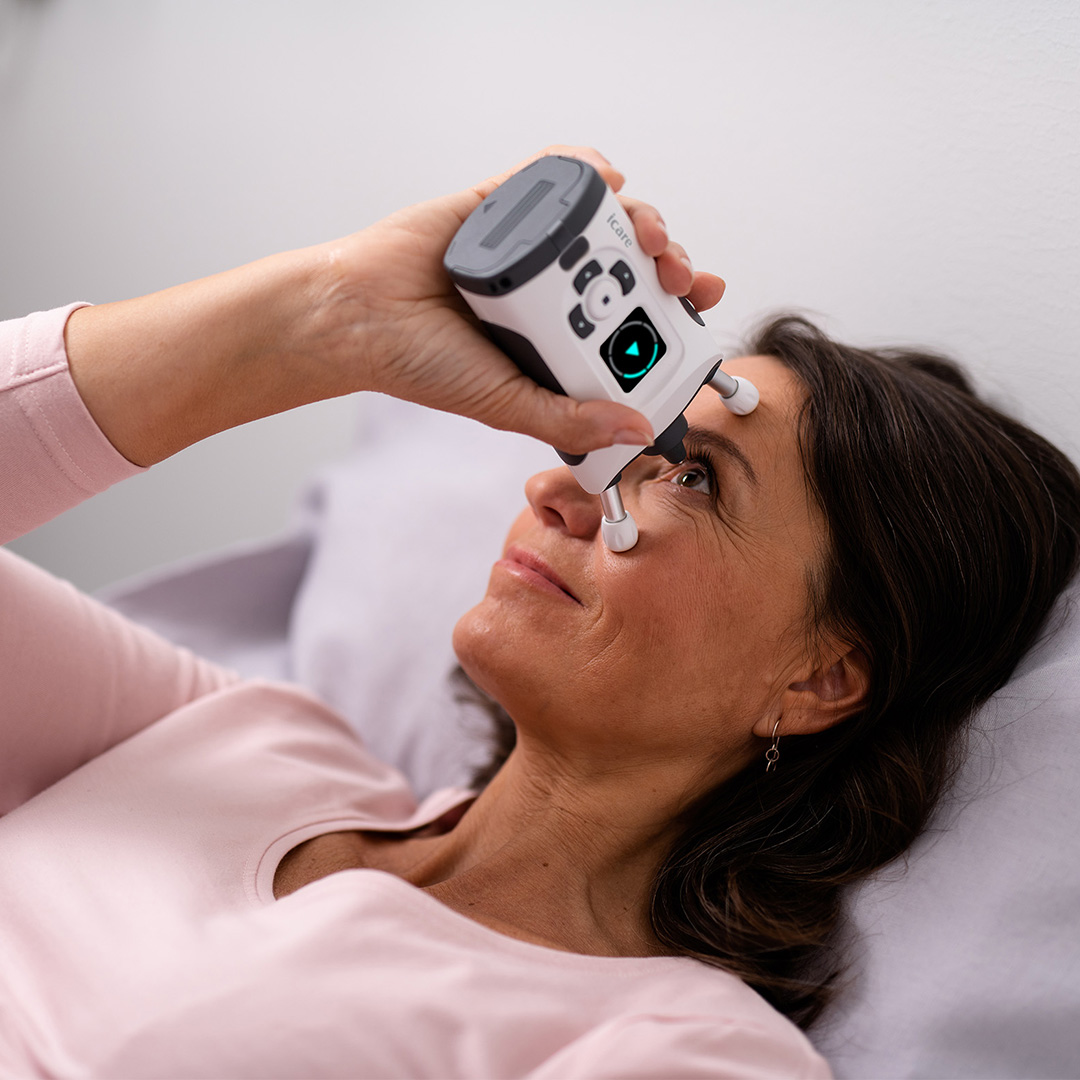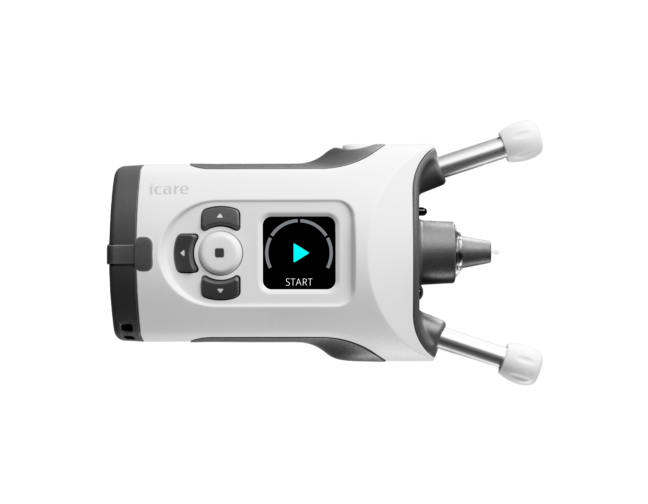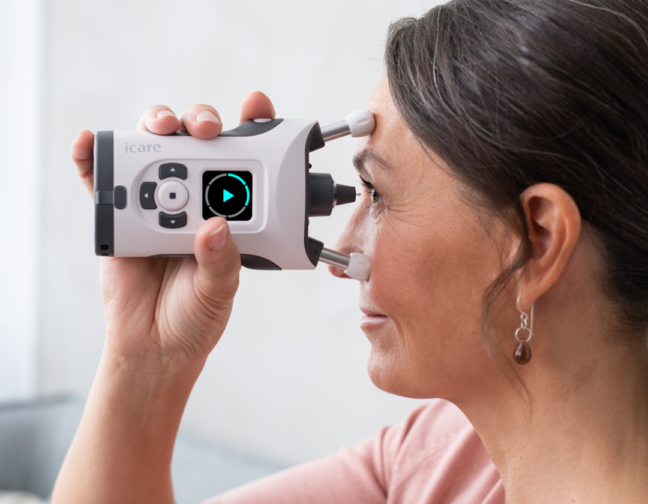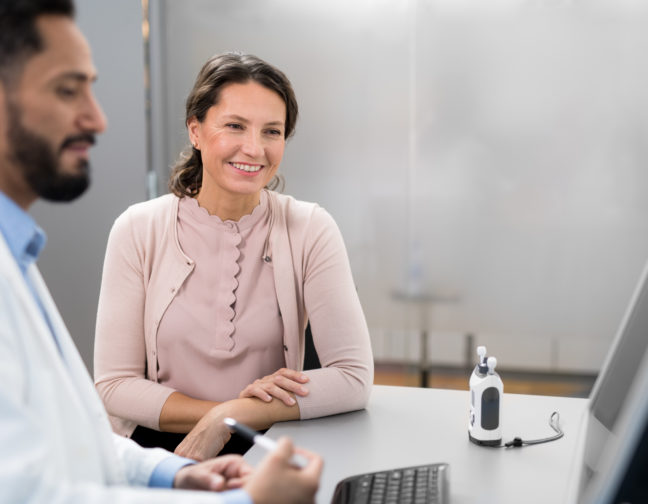Dr. Barbara Wirostko, M.D., FARVO, Moran Eye Center, University of Utah, recently spoke at the DOG conference in Berlin about the complexity of glaucoma and the importance of ambulatory monitoring of intraocular pressure (IOP) for patients.
The glaucoma specialist observed that self-tonometry with a device like iCare HOME2 can help eye health professionals personalize treatments while empowering patients in their glaucoma care journey.
Self-tonometry reveals undetected IOP spikes in glaucoma patients and helps tailor treatment
Dr. Wirostko shares her insights into the transformative impact of monitoring IOP over 24 hours with the iCare HOME2. She started using the device because she suspected undetected pressure spikes in patients who were seemingly controlled during office visits.
“Patients that I thought were controlled on maximum medication were actually spiking into the twenties. And what that told me was that they were not controlled. That enabled decisions to take that patient either to surgery sooner, or change their medications,” she reveals.
In response to these findings, the doctor says she has incorporated a proactive strategy — patients coming to a consult now use the iCare HOME2 for a week’s worth of readings. This practice helps them get a comprehensive look at potential pressure spikes and identification of maximum IOP, especially with growing evidence that fluctuation is an independent risk factor.
iCare HOME2 is not just a diagnostic tool, but an effective approach to monitoring IOP
Exploring the reasons behind IOP fluctuations, Dr. Wirostko acknowledges the complexity of triggers such as morning cortisol levels, exercise, stress, and other individual factors. The dynamic nature of pressure spikes observed even in patients with seemingly normal office readings, underscores the need for personalized approaches to understanding and addressing these fluctuations.
The doctor now sees widespread benefits of 24-hour IOP monitoring for all glaucoma patients. The device is also handy for medical professionals to keep an eye on sustained-release eye pressure medications.
“When I talk to many of my colleagues, we are starting to see that if you have glaucoma, why not monitor your IOP on a regular basis? You know, it’s sort of similar to asking if you’re a diabetic, why are you not monitoring your glucose? Originally, I used it as a diagnostic tool. More and more, I’m using it as a monitoring tool,” she explains.
Patients can now take IOP measurements easily, accurately and independently
Dr. Wirostko emphasizes the ease of use of the iCare HOME2 which makes it suitable for all kinds of patients including elderly patients. The user-friendly interface guides the patient to take measurements easily and accurately without the need for anesthetics.
Talking about the repeatability, accuracy, and reliability of the device, Dr. Wirostko points out that the rebound tonometry technology that powers the iCare HOME2 has been around for 20 –30 years. Regulatory bodies like the FDA and EMA trust these measurements in drug development in animal tests.
“We’re comfortable with Goldmann, but it is not that reliable. It has inherited issues in reliability, and repeatability. Numerous studies have looked at the repeatability, reliability, and sensitivity of rebound tonometry. The measurements, within the range typically from 10 to 12 up to the low twenties, are very close to a Goldmann reading,” she says.
Importantly, home monitoring has transformed patient attitudes toward their condition, as evidenced by feedback from 300 patients in the systems of the Moran Eye Center and the Wilmer Eye Institute in the USA.
The results revealed that patients who use home monitoring express an increased awareness of their eye pressure, efficacy of medication, fluctuations, management, and treatment plans.
“It truly empowers the patient, and it makes the patient a part of the solution. It’s been life-changing for many of my patients with severe disease,” she adds.
In conclusion, Dr. Wirostko emphasizes that despite ongoing studies to understand the genetic and secondary aspects of a challenging and devastating disease like glaucoma, the central management approach remains pressure reduction.
“That’s why even if there are different causes, we still have one management approach. And the more information you have on what that pressure is, you can better tailor the treatment,” she sums up.



